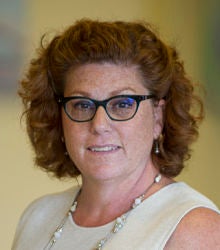
Jayne Josephsen, associate professor for the School of Nursing, is celebrating the publication of her manuscript, “Cognitive Load Measurement, Worked-Out Modeling, and Simulation,” in the October 2018 peer reviewed journal Clinical Simulation in Nursing.
For this project, Josephsen studied the implementation of worked-out modeling (WOM) in the briefing of students prior to simulation in order to measure post-simulation knowledge and cognitive load experienced. Josephsen defines WOM as “the modelling of a skill or procedure by a registered nurse paired with the verbal and gestural description of the critical thinking processes.”
Josephsen conducted the study by using a sample of 61 senior-level nursing students who had previously participated in a simulation. The 61 students were split into two test groups; one was a controlled group and the other a treatment group. The controlled group performed the usual pre-simulation reading assignment, went through usual briefing, orientation, and question/answer time prior to simulation. The treatment group of students went through the same pre-simulation preparation but it was shortened to also allow the showing of a 10-minute WOM video that contained an expert nurse performing the simulation and providing a verbal description of the thinking processes.
A pre-simulation and a post-simulation survey were conducted with both groups to measure the overall cognitive load experienced during simulation. As a result, Josephsen found that further research concerning WOM in the pre-simulation preparation is required as she discovered that using surveys as a cognitive load measurement tool for the study required caution when attempting to interpret large amounts of data. Therefore, a revised tool and further research is planned to examine the measurement tool to further interpret results.
Read the full article: “Cognitive Load Measurement, Worked-Out Modeling, and Simulation.”